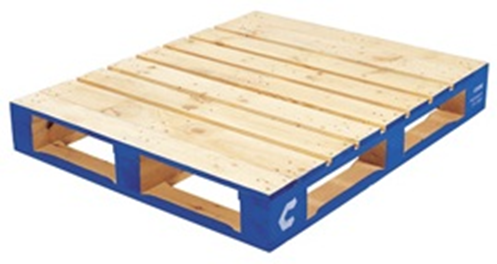What are the guidelines for correct positioning of pallets?
- Keith D Goodfellow (SARI)

- May 6, 2020
- 3 min read
Updated: Jan 15, 2021
Correct pallet positioning is vital to ensure that pallets sit safely in your racks, but unfortunately it is seldom taught to truck drivers. They are taught how to drive a forklift truck but the training usually stops at the rack face so if they are not taught these simple but vital facts they can hardly be blamed for incorrect pallet placement. They are not for example taught about maintaining the correct clearances and pallet overhang which we will cover in this blog, or about the different types of pallet, their suitability for the various types of racking in your warehouse and this will be discussed in another blog Pallet & load quality.
So now we will look at correct pallet positioning. It used to be the practice many years ago that guidance to drivers was to place a pallet hard up against the frame or upright. This is not the correct way to do it. There should never be contact with the structure during placement and if a driver needs to reposition a pallet it should be lifted and placed in the correct position and not shunted across the beams which will result in problems such as beams bowing often causing permanent damage, twisting to frames, and loosening to floor fixings. The following tables show the SEMA clearances for pallets.
Standard adjustable beam pallet racking SEMA clearances
If adequate clearances are not maintained the risk of pallet or load dislodgement or complete displacement is greatly increased. From the table below we can see that as the beam height increases so progressively do the clearances a, b, & c. Why is this? Well when placing pallets the higher the beam is set the harder it is to judge the clearance, combined with other factors such as mast sway, poor lighting etc. But take careful note that we are not just seeing a need for clearance to adjacent items in dimensions a & b. We also see the need for a lift-off clearance above the pallet in dimension c. This is vital to ensure adequate space over the load to allow placement and especially retrieval without contact with the beam above which would otherwise result in either beam dislodgement, or damaged or displaced stock off the top of the pallet. So if for example your beam levels are between 3m & 6m you should ensure clearance to adjacent items of 75mm and also a clearance above the load of 100mm.

In the next table we see the need to maintain a pallet overhang over the front and rear beams and back to back clearance – the x, y, & z dimensions on the table. For example if the pallet (x dimension) is 1,000mm deep the frame (y dimension) needs to be 900mm deep providing an overhang on the front and rear beams of 50mm. If the pallet is 1,200mm deep the frame needs to be 1,000mm deep providing an overhang front and rear beams again of 50mm. We also need to maintain a clearance between back to back loads which in both the examples above would be (x dimension) 100mm. This clearance is to prevent the risk of a pallet push through.
So where you are storing pallets 1,000mm or 1,200mm into the racks i.e. UK type pallets, Cheps, or Euros then the pallet overhang is 50mm. The reason for this overhang is that if the pallet is the same size as the frame, given that beams are typically around 50mm wide there is little margin for error so this clearance allows a little latitude for placement. Looking at these tables clients will often ask if decks are not a requirement in a warehouse to provide a solid shelf. The answer is they are not a requirement but I am a great fan of decking. It allows far greater flexibility on pallet size and positioning and can also act as a picking shelf. It is vital however to ensure that if decking is fitted it is correctly specified for the type of pallet or load you are storing. For example post pallets can exert considerable point loads where the cups rest on the decks. So consult a specialist supplier– visit the SEMA web site at www.sema.org.uk who can provide details of accredited suppliers. Your friendly timber merchant down the road is unlikely to be aware of the correct design criteria and method of construction and I have seen many installations where the decks are not correctly dimensioned for the racks and pallets, are not secure, or quickly fall apart since incorrect fixings have been used.

Notes:
· The 2010 SEMA guidelines make no distinction between 2 and 4-way entry pallets.
· The 50mm pallet overhang is not necessary when suitable decking is installed.
· Where in rack sprinklers are installed this dimension is usually 150mm.



Comments